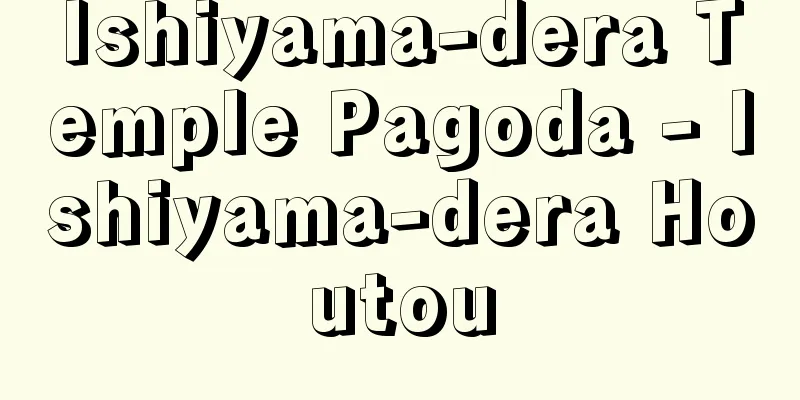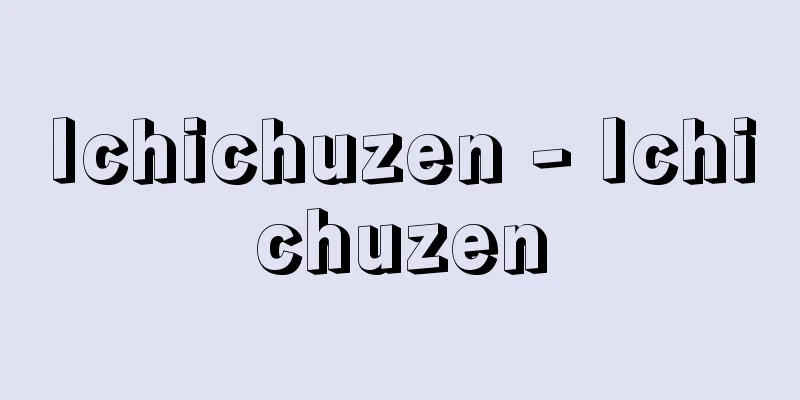Tax book - Shozeichou

|
Under the ancient Ritsuryo system, this was a settlement report of the annual tax that was submitted by the kokushi to the central government. During the Ritsuryo period, the rice tax (denzei) collected from the people and sent to the national treasury was called shozei. Shozei was also called taizei or kanin. In a broad sense, it meant the rice tax that was deposited in the storehouses of each province and used for annual expenses, but in a narrow sense, it can also refer to the publicly distributed rice (kusui kotou) in contrast to the publicly distributed rice (kugaitou) and miscellaneous rice (zotou). In addition to being transported to Kyoto as separate tax and shomai, the rice tax was deposited in the provincial storehouse or county storehouse and used for various expenses in each province. The main types of tax were shozei, shakutai, public storehouse, reiyo, and temporary use. The ordinary taxes were used to cover the costs of annual events held at local provincial offices, such as offerings to shrines, reciting the Sutra of the Three Sacred Kings, offerings to Buddhist altars, feeding horses at stations, and purchasing miscellaneous goods for trade. The extraordinary taxes were temporary expenditures made on the basis of orders from the Daijokan (Grand Council of State). In addition, the travel of provincial governors and relay messengers was also covered by regular taxes. In each province, ledgers were created that recorded the amount of tax collected each year, expenditures, and balances. These are called tax registers. The format for recording is detailed in the section on main taxes in the Engishiki, and around 25 tax registers and county rice registers from the Tenpyo period (729-749) remain as Shosoin documents. These are from Sakyo (Tenpyo 10), Yamato (Tenpyo 2), Settsu (Tenpyo 8), Izumi (Tenpyo 10), Iga (Tenpyo 2), Owari (Tenpyo 2, Tenpyo 6), Suruga (Tenpyo 9, Tenpyo 10), Izu (Tenpyo 11), Echizen (Tenpyo 2), Sado (Tenpyo 8), Tajima (Tenpyo 13), and the rest are listed below. The records are from the following provinces: Oki (Tenpyo 1, Tenpyo 5), Harima (Tenpyo 10), Suo (Tenpyo 7, Tenpyo 10), Nagato (Tenpyo 8), Kii (Tenpyo 2), Awaji (Tenpyo 10), Iyo (Tenpyo 8), Chikugo (Tenpyo 10), Bungo (Tenpyo 8), and Satsuma (Tenpyo 8), but many are fragmentary. The section on the Civil Section of the Engishiki states that the time for submitting tax books to the central government was before February 30, but the regulations for the various islands of the Saikaido were that they should be sent to Dazaifu before February 30, where they would be overturned and sent to the Daijokan before May 30. The official of the provincial government office who presented the tax books from each province was called the tax envoy, and when the tax envoy went to Kyoto, he brought along not only the tax books but also the registers of government land and land holdings. The tax books were inspected for each category by the Tax Bureau of the Ministry of Civil Affairs, and if there were any errors or irregularities, they were returned. For example, if an error of 10,000 soku was found for the large provinces, 8,000 soku for the upper provinces, 6,000 soku for the Chinese provinces, and 4,000 soku for the lower provinces, the tax books were returned and the government was ordered to make up for the mistakes. The books that were uncovered were called tax return books. As mentioned above, the tax books were the core of local finances, so when the kokushi was replaced, any deficits made during his term of office were made up, and sometimes tax inspectors were dispatched to investigate. [Tatsuo Inoue] "A Study of the Tax Book by Tatsuo Inoue (1967, Hanawa Shobo)" Source: Shogakukan Encyclopedia Nipponica About Encyclopedia Nipponica Information | Legend |
|
古代律令制(りつりょうせい)下において、国司が中央政府に提出した1年間の正税の決算報告書。律令時代、人民から国庫に徴した田税(でんぜい)を正税という。正税は大税とも官稲とも称した。広義には、諸国の倉に納められ年間の費用にあてる田租を意味したが、狭義には公廨稲(くがいとう)や雑稲(ぞうとう)に対する公出挙稲(くすいことう)をさすこともある。田租は別納租穀や舂米(しょうまい)として京に運ばれるほかは、国の正倉や郡倉に収められ、諸国のいろいろな費用にあてられた。そのおもなものは、出挙、借貸(しゃくたい)、公廨、例用(れいよう)、臨時用などである。例用とは、地方国衙(こくが)での年中恒例行事の費用にあてるもので、神社の幣帛(へいはく)料、最勝王経(さいしょうおうきょう)転読料、釈奠(せきてん)料、駅馬飼秣(しまつ)料および交易雑物の購入料などである。臨時用は、太政官符(だいじょうかんぷ)などの命令によって臨時に支出する費用である。そのほか、国司巡行や駅伝使の往来なども、すべて正税でもってまかなわれた。 諸国では、毎年の正税の収納高、支出、残高などを書き上げた帳簿をつくった。それが正税帳である。記載様式は、『延喜式(えんぎしき)』主税の条に詳細に記されているが、天平(てんぴょう)年間(729~749)の正税帳や郡稲帳が25通ばかり正倉院文書として残されている。それは左京(さきょう)(天平10)、大倭(やまと)(天平2)、摂津(せっつ)(天平8)、和泉(いずみ)(天平10)、伊賀(いが)(天平2)、尾張(おわり)(天平2、天平6)、駿河(するが)(天平9、天平10)、伊豆(いず)(天平11)、越前(えちぜん)(天平2)、佐渡(さど)(天平8)、但馬(たじま)(天平8)、隠岐(おき)(天平1、天平5)、播磨(はりま)(天平10)、周防(すおう)(天平7、天平10)、長門(ながと)(天平8)、紀伊(きい)(天平2)、淡路(あわじ)(天平10)、伊予(いよ)(天平8)、筑後(ちくご)(天平10)、豊後(ぶんご)(天平8)、薩摩(さつま)(天平8)であるが、多くは断簡である。正税帳を中央官庁に差し出すのは、『延喜式』民部の条には2月30日以前とされるが、西海道の諸国諸島は2月30日以前に大宰府(だざいふ)に送り、そこで覆勘(ふくかん)されて5月30日以前に太政官に送る規定であった。諸国から正税帳を進める国衙(こくが)の役人を正税帳使(正税使)というが、正税帳使は正税帳のほかに義倉(ぎそう)帳、官田地子(じし)帳なども附帯して京に赴いている。正税帳は、民部省主税寮で各綱目ごとに検査され、記載の誤りや、不正があれば返却された。たとえば大国1万束、上国8000束、中国6000束、下国4000束の誤算が指摘されれば、正税帳は返され、補填(ほてん)が命ぜられた。この摘発した帳簿は正税返却帳という。以上のように正税は地方財政の中心をなしていたから、国司の交替にあたっては、在任中の欠損を補填させ、ときには検税帳使を派遣して検察を加えることもあった。 [井上辰雄] 『井上辰雄著『正税帳の研究』(1967・塙書房)』 出典 小学館 日本大百科全書(ニッポニカ)日本大百科全書(ニッポニカ)について 情報 | 凡例 |
<<: Calcined phosphate fertilizer (calcined phosphate fertilizer)
>>: Xiǎn Xing hǎi (English: Sea of Xingxing)
Recommend
Documents of the Former Scholars Group - Kyuugakuryogataippamonjo
In addition to these, many documents related to t...
Planocera reticulata (English spelling) Planocerareticulata
...The Ijima flatworm Stylochus ijimai and the Fl...
Guzana - Guzana
...This pottery is a magnificent work that is con...
U - U
〘Noun〙① One of the names of the Chinese zodiac. It...
Phytoalexin
A general term for low-molecular-weight antibacter...
breviary
...Hourly prayer (properly speaking, hourly praye...
Empiriocriticism - Empiriocriticism
A theory put forward in the late 19th century, mai...
Saccheri - Saccheri (English spelling) Girolamo Saccheri
1667‐1733 Italian mathematician. He was a Jesuit p...
Infectious genetics
…These are called infectious agents. The inherita...
Pseudacris
...The vocal sac is located under the throat and ...
Peking Opera
A representative form of traditional Chinese thea...
Fermat's principle
The principle that forms the basis of geometric o...
Building Density
A concept that indicates the amount of buildings o...
Airport - kuukou (English spelling) airport
An airport is an airport that is open to the publ...
Yamabushi Kagura - Yamabushi Kagura
Kagura was brought to Japan by mountain ascetics ...









